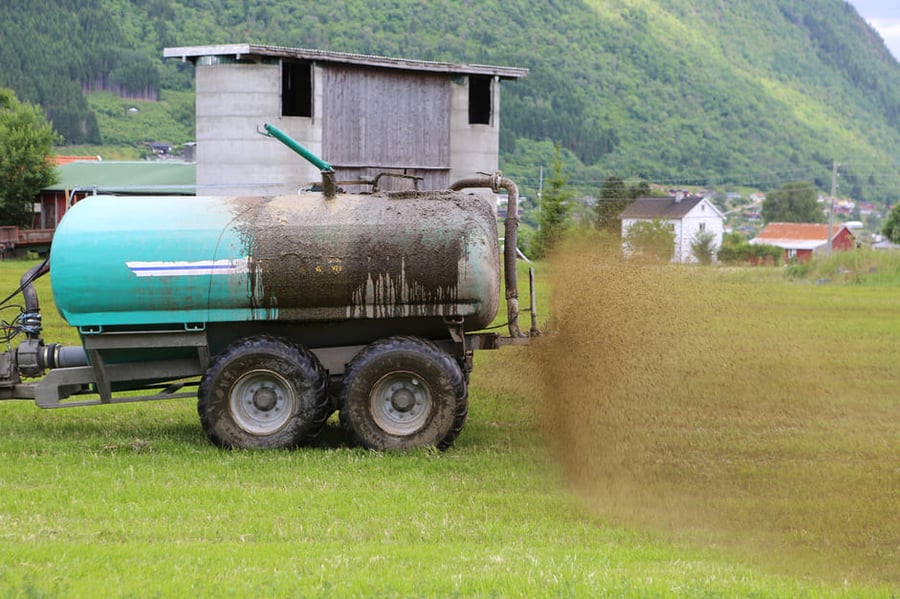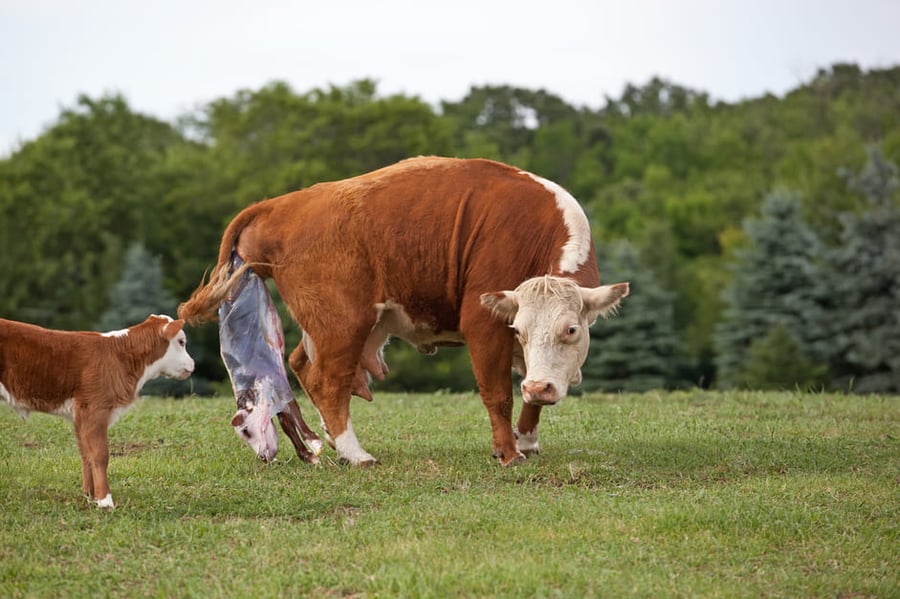Coxiella burnetii is a small bacterium that causes coxiellosis, also named Q fever. Q fever is a disease that can affect many species of animals and humans. In ruminants, it is responsible for reproductive disorders such as abortions, stillbirths, retained placenta, metritis and fertility disorders. Coxiella burnetii is therefore responsible for significant economic losses in ruminants’ farms.
What are the main features of Coxiella burnetii ?
Coxiella burnetii exists in two forms. The Small Cell Variant (SCV) form and the Large Cell Variant (LCV) form. The latter is the form of the bacterium that is responsible for the clinical signs. In contrast, the SCV form is the infectious form. It is characterized by its very small size and high resistance in the external environment. These two properties make it particularly contagious.
What are the virulent material ?
Infected and therefore contagious animals excrete Coxiella burnetii by three main routes:
- The genital route and in particular at the time of birth or abortion
- The faeces
- The mammary route, through the milk

Milk is not an important source of contamination because it is not widely spread, and its bacterial load is reduced. On the other hand, the products of parturition are very rich in bacteria and when they are left in the air, the diffusion of bacteria is important. Similarly, faeces are an important source of bacterial diffusion.
How Coxiella burnetii reaches a new farm ?
This bacterium is very contagious because, due to its small size, it can spread very easily over several kilometres. In particular, it has been shown that in windy conditions it can be carried up to 18 kilometres.
This means that the disease can easily be transmitted from an infected farm to a healthy farm, even if they are several kilometres apart. The risk of infection is of course even higher when the animals are outside during the grazing season.
Since animals are infected through the nose, the spread of the bacteria through the air is particularly effective in infecting large numbers of animals. Moreover, the dose needed to infect an animal is low. In human medicine, it has been shown that 100 bacteria are enough to infect a person. If we compare this figure with the amount of bacteria present in faeces or placenta (up to 1 billion per gram), it is obvious that the risk of an animal being indirectly infected by another animal from another farm, even several kilometres away, is high.
Once an animal (or several animals) in a herd are infected, airborne spread allows rapid contamination of other animals in that herd.

There is also another source of contamination of healthy herds. The introduction of an animal already contaminated with Coxiella burnetii, for example through a purchase. This animal, through excretion of the bacteria in vaginal discharge, parturition products and faeces, will contaminate the environment and then, via airborne spread, transmit the disease to healthy animals.
Contamination of new farms through the introduction of infected animals, although less important than through airborne spread from farm to farm, should still be considered by farmers by ensuring that the animals introduced come from Q fever free farms.
How to avoid environmental contamination by Coxiella burnetii ?
Since the virulent materials that cause environmental contamination are mainly birth products and faeces, the spread of Coxiella burnetii can be limited by a few simple rules.
- Immediately after parturition, remove the fetal appendages and eventually the aborted fetus from the litter. All these contaminated materials should be stored in an airtight container and destroyed as soon as possible
- Avoid spreading manure on pasture when animals are present and during windy conditions.
Key message
Coxiella burnetii is therefore a particularly contagious bacterium that is capable of contaminating a farm located several kilometers away. It is therefore important to know the virulent materials in order to limit the spread of the bacterium and thus to protect one's herd and other farms. Simple biosecurity measures, in addition to other measures such as vaccination, can control the spread of the disease.
About the author
Philippe Gisbert (Ruminants Global Technical Manager)
Philippe Gisbert started his career in 1994 as a Vet practitioner working with companion and farm animals for over 9 years. He then became Health Affairs Manager for Group Agena (artificial insemination company). In 2008 he joined Eurofins – Laboratoire Coeur de France as Animal Health Unit Manager where he worked for 7 years until he joined Ceva France as Technical Manager Ruminants (Infectiology, Vaccines and Diagnostic). Since 2020 he is Global Technical Manager for Biologicals, Udder Health and Antiinflammatories. He is a member of SIMV diagnostic and anti-infective technical groups and has integrated different working groups of ANSES and UNCEIA related to epidemiology, antibiotic resistance and reproduction in livestock.
Explore author’s articlesFrequently Asked Questions
-
What happens if a human gets Coxiella burnetii?
60% of the cases are asymptomatic but in 40% of cases, the infection is characterized by a flu-like syndrome. Nevertheless, 4% of patients require hospitalization due to hepatitis, lung infection, meningitis or encephalitis. This acute form of the disease mainly concerns immunodepressed people. 2% of Q fever infection will progress to a chronic form, which manifests itself as cardiovascular disease (endocarditis or vascular infection), chronic fatigue or for pregnant women abortion or premature delivery. -
Is Coxiella burnetii difficult to treat?
Antibiotics are of limited efficacy in the control of Q fever in ruminants.The control of Q fever in ruminant herds involves non-medical measures (biosecurity) and animal vaccination. The commercially available vaccine reduces both the clinical signs of the disease, such as abortions, and the shedding of the causative bacteria.

-1%20(1)%20(1)%20(1).webp)
Leave your comments here